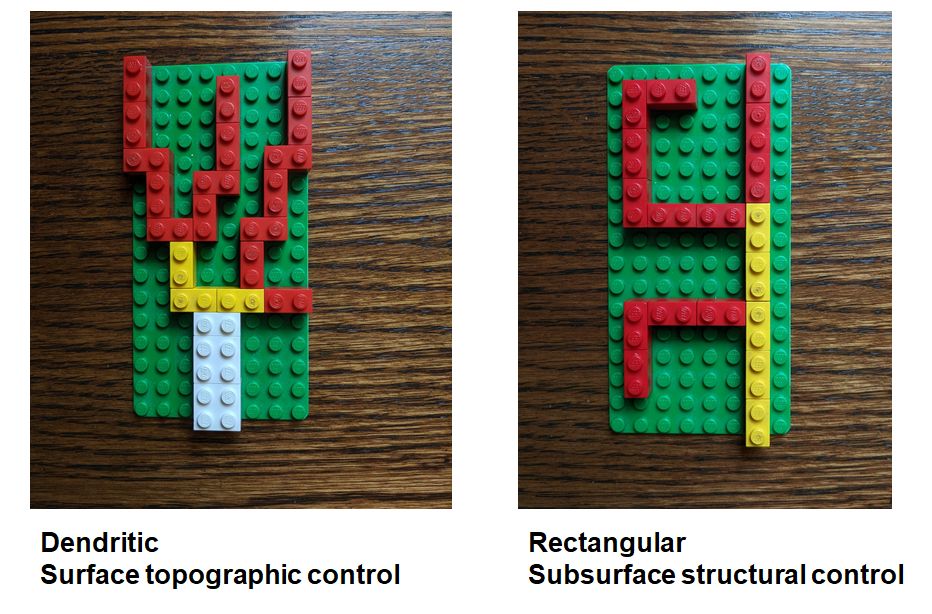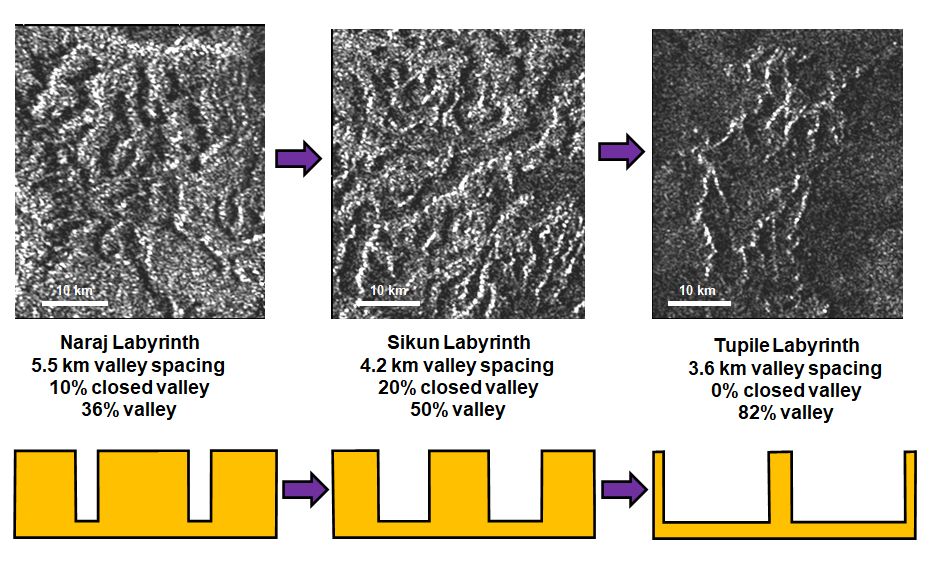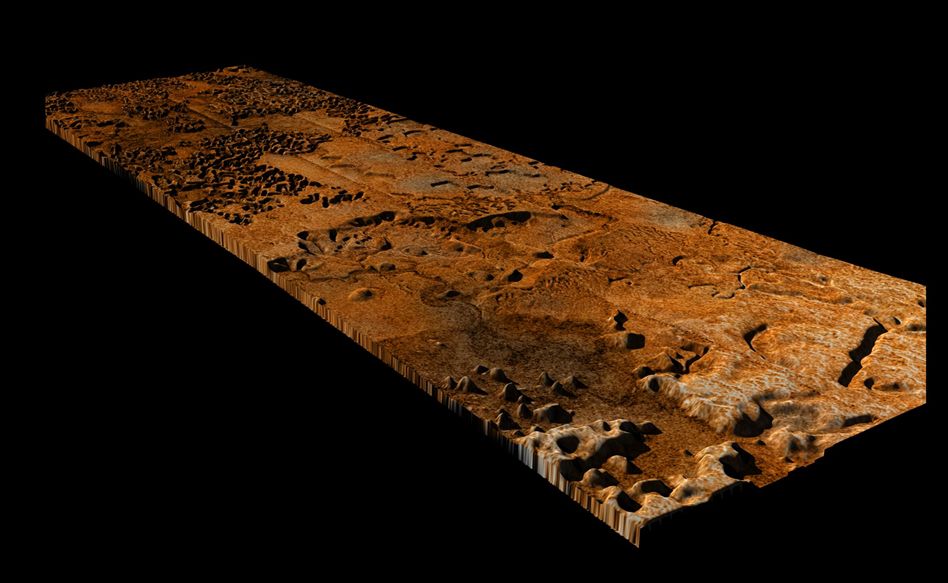Here an animation showing valley formation from SOLUBLE rocks. This time the white LEGO layer is soluble. It dissolves deep, along cracks. Then collapses upward to open up the valleys. Valleys are narrow, deep, and aligned with joints and cracks (structural control).
So at end of it all, you get the two different types of valley networks. Here is that comparison LEGO valley network landscape again.
Surface topography control gives dendritic valley formation (on left), deep karstic structural control can give rectangular valley formation (on right).
We’ve got nice examples on Titan that shows different evolutionary states of the labyrinths. You can see some that have about the same spacing between valleys. As dissection evolves the valleys widen and thin the plateaux between valleys to remnant ridges. Here are some examples:
All of these are located pretty close to each other in the greater Sikun Labyrinthus region.
Pretty much a karstic geological wonderland down there.
Pretty much a karstic geological wonderland down there.
Here is an artistic impression of that whole region on Titan. Palma, Naraj, Sikun, Tupile, Ecaz Laybrinths from front to back. (N to S).
(I'll tweet up how we made this image in a separate thread. It could be totally wrong, or could be best guess evah.)
(I'll tweet up how we made this image in a separate thread. It could be totally wrong, or could be best guess evah.)
So how do the Titan labyrinth plateaux get uplifted?
(this is the part that will excite anyone interested in #astrobiology and alien life).
(this is the part that will excite anyone interested in #astrobiology and alien life).
One idea, and much of this research is being done by @PlanetaryLauren, is that a deep injection of liquid water at the brittle-ductile ice transition about 30 km-ish deep in Titan's ice crust could push up some of the labyrinths.
So here is a LEGO animated sequence of this happening. Blue is Titan's deep subsurface ocean (100 km down). Yellow is convective warm deep crustal ice, white is brittle cold shallow crustal ice, red is the thick organic top cover.
If there were any alien microbes (or squid) living in the deep subsurface ocean of Titan over 100 km down, maybe they could get pushed up to only 30 km below the surface. That's pretty neat!
(30 km is like Europa crust thickness. Titan much easier to land on, too.)
(30 km is like Europa crust thickness. Titan much easier to land on, too.)
But think of that shallow liquid water environment. It's warmish, it's liquid. Has nutrients (salts) from the ocean, and maybe....just maybe..fractures in the brittle ice could let surface organics (500 m thick!) dissolved in hydrocarbons mix in with that water.
There are microbes on Earth that live at similar conditions in the Deep Ice (GISP2 core had living bacteria at 3 km depth). Some cold-tolerant microbes can even live on some likely Titan organics like naphthalene and acetylene as as both food and carbon source.
So you can think of an awesome planetary drill mission that could land on a labyrinth plateau, sample all those wonderful organic layers, learn Titan geology, then drill down to that 30 km deep water lens and look for life.
So our new paper describes the Labyrinth terrains on Titan, and has important implications for Titan #geology, #karst geology, and #astrobiology.
Currently available here! Download while you have free access! https://www.sciencedirect.com/science/article/pii/S0019103520301524?dgcid=author
Currently available here! Download while you have free access! https://www.sciencedirect.com/science/article/pii/S0019103520301524?dgcid=author

 Read on Twitter
Read on Twitter




